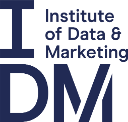When you present, there's a lot you could pay attention to.
Have you ever asked yourself when you present, where you choose to look? Perhaps you pay attention to your slides. Maybe it's your notes. Or perhaps the floor or table, maybe the back wall of the room?
What about your audience? How often do you make eye contact with them? If your answer is 'infrequently', you could be missing out on a useful way to make an impact.
Making eye contact with your audience is a key way to connect with them and build rapport. It's a great way to build empathy and shared understanding and it supports your message. Eye-contact is important to successful presentations because it helps you to deepen meaning and support your confidence. It creates a feedback loop connecting you to your audience and them to you:
You can see your audience and they can 'be seen': You are saying, "I care about each and every one of you around this table or in this room, I care about this issue". And they see that this is what you mean. This compliments your message and strengthens it. But they'll only fully understand this if you look at them.
Your audience can see you and you can 'be seen': They are saying "Here's where our attention is. Here's what we care about." They may be returning your eye contact or looking elsewhere. Wherever their attention is, you get to see it. But only if you look at them. And you'll only get to notice when their attention changes if you follow it.
The key to making more of eye contact opportunities is to be ready to take them. Eye-contact can only be put to positive effect if you're confident in your material. And this comes down to practise and rehearsal of your presentation (at least twice aloud) prior to the meeting.
Being under-rehearsed takes your attention away from your audience. You may end up reading from your slides. If you're 'improvising' the content you'll be focussed on what to say next. Equally if you prepare notes on what you're going to say under-rehearsal means you end up reading from your notes. In all of these cases, eye contact will be underutilised because your attention will be elsewhere.
Practice your eye contact in front of a mock audience before you bring it into your presentation. This gives you a chance to ask them what they think or feel about how you come across and gives you a chance to adjust what you're doing.
Then, when it comes to the presentation here are some moments to use eye contact to compliment what you're saying:
At the start: when you say your 'welcome and thank you', do a sweep of the room and connect with every pair of eyes and smile. You may get a smile or two back and this will settle your nerves. If you don't, not to worry. You will have established an early connection regardless.
When speaking to the room: when you're speaking it's fine to look away every now and then. But make this is not to your slides or notes. When your eyes come back, make sure they go back into sweep mode. When speaking to an individual, again it's fine to look away but then look back so to maintain eye contact more so than not.
When listening: when you're listening, hold the gaze of the person who is speaking. They will look away but keep your attention on them. Hold your gaze in a relaxed way.
When you pause and ask a question: "I'm going to pause here and ask what you think. What's occurring to you?" Sweep and look for someone who meets your eyes. And then ask, "would you like to say something?" You'll often be right and if you're not, no harm done.
At the end: when you say your 'thank you and look forward to hearing from you', do a final sweep of the room and connect with every pair of eyes and smile.
What do you think? A place to start would be to begin to notice where your eyes go in presentations. And then start to incorporate the above, perhaps one at a time. You'll find that you become a more confident and effective presenter and achieve a greater impact as a result.
Want to further improve your presentation skills and develop your confidence? Consider the IDM's Innovate You: Become a Modern Marketing Leader training course.
John Scarrott is a trainer and coach working with professionals on their approach to communication. Follow him @JohnDScarrott
Did you find this blog useful?
At the IDM we are passionate about educating marketers and providing resources to help advance your career.
If you are interested in enhancing your CV and upskilling, browse through our wider range of marketing courses and qualifications; from one-day short courses to post-graduate diplomas.
Our learning and development team will be happy to advise based on your needs and requirements.
